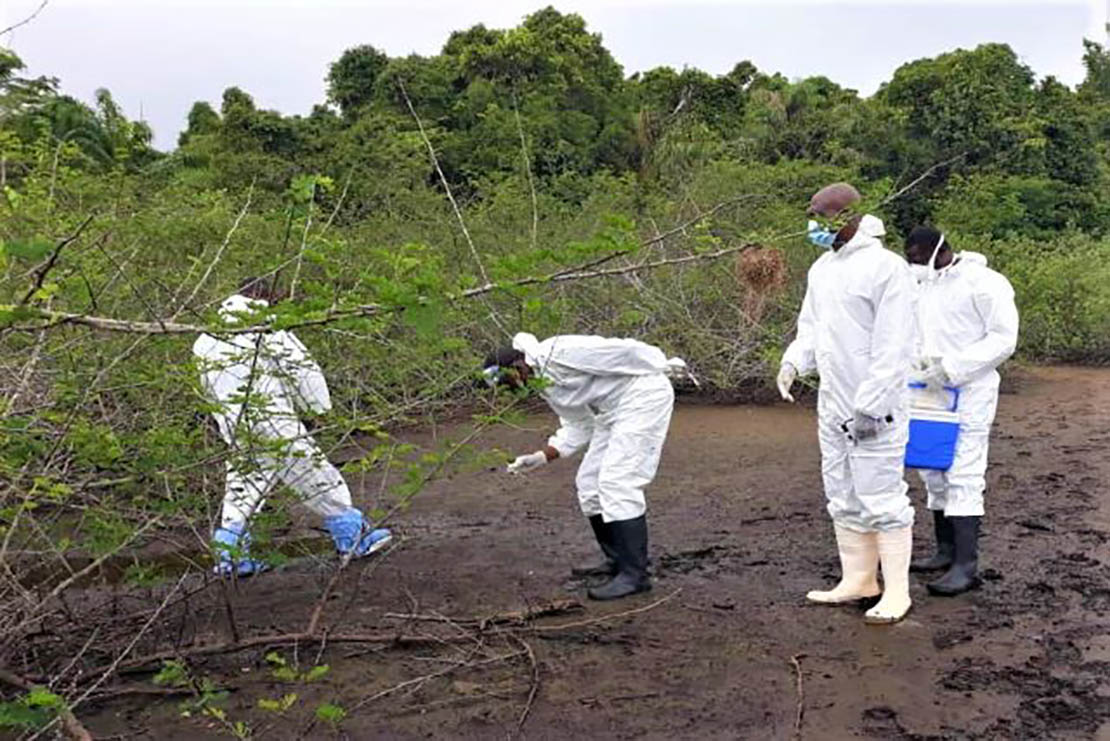FAO and USAID work with the Government of Côte d'Ivoire to contain avian influenza
From 19 to 21 August 2021, joint emergency missions were deployed by the Ministries of Animal Resources, Environment and Water and Forests, FAO and Health Protection Groups for the surveillance of highly pathogenic avian influenza virus in migratory bird resting areas and live poultry markets

In Côte d'Ivoire, the poultry industry represents an important market with annual turnover of nearly 250 billion francs CFA, annual growth of 10 to 12 percent, and the creation of 200 000 jobs.
Following the confirmation of the outbreak of highly pathogenic avian influenza (HPAI) subtype A/H5N1 in Mondoukou (Grand-Bassam) by the Central Veterinary Laboratory of Bingerville on 10 August 2021, sanitary regulation measures were implemented, including the cull of more than 300 000 poultry. Côte d'Ivoire experienced its first HPAI outbreak in 2006. The disease caused a financial loss of about 10 billion francs CFA. The poultry value chain was successively affected in 2006, 2015 and 2017 by the resurgence and persistence of the virus.
Given the potential economic losses and public health importance of another outbreak, experts from the Côte d'Ivoire Directorate of Veterinary Services and FAO, with the support of the United States Agency for International Development (USAID), jointly organized emergency field missions to assess the HPAI situation in migratory bird staging areas and in live poultry markets.
Two teams comprising experts from the FAO Emergency Centre for Transboundary Animal Disease Control (ECTAD), the Ministry of Animal Resources and Fisheries, the Ministry of Agriculture and Rural Development, the Ministry of Water and Forests, the Ministry of the Environment, the Central Veterinary Laboratory of Bingerville and the Ivorian Office of Parks and Reserves were mobilized from 21 to 22 August 2021. These teams conducted investigations among poultry value chain operators and poultry market managers in order to document the provenance, sales, mortalities, sources and origins of poultry and migratory birds. In poultry markets, the mission collected data on events that could be related to the HPAI outbreak declared on 10 August in Grand-Bassam. In total, 25 live poultry markets were visited and 1 112 samples were collected.
The investigation team deployed in migratory bird staging areas ("wetlands") visited the Eothilés National Park, the Mondoukou estuary, the Moossou bridge, the Partial Nature Reserve of Dahliafleur and Assouindé, where 50 samples were collected from bird staging areas (faecal swabs from dead birds and from birds captured at the identified sites). The results of the analysis will be used to draw up risk maps for events linked to the Grand-Bassam outbreak and to conduct a preliminary analysis of the risk of HPAI in the resting areas of migratory/wild birds.
The particularity of HPAI lies in its very high mortality rate and rapid spread to other farms, resulting in considerable direct and indirect economic losses for the poultry industry. In particularly favourable conditions, it can also infect certain mammals such as pigs and humans. It is important to safeguard poultry production, which forms an essential part of livestock farming in Côte d'Ivoire and plays a significant role in food security, the fight against poverty and the advancement of gender equality.
